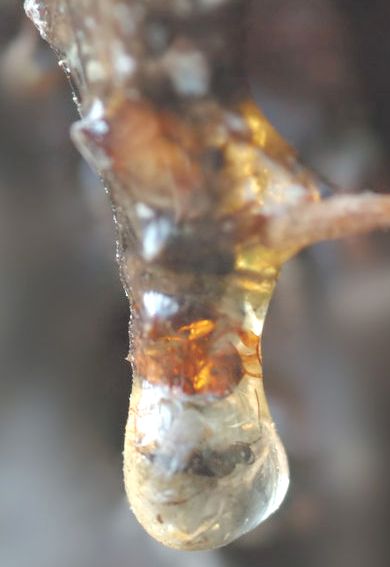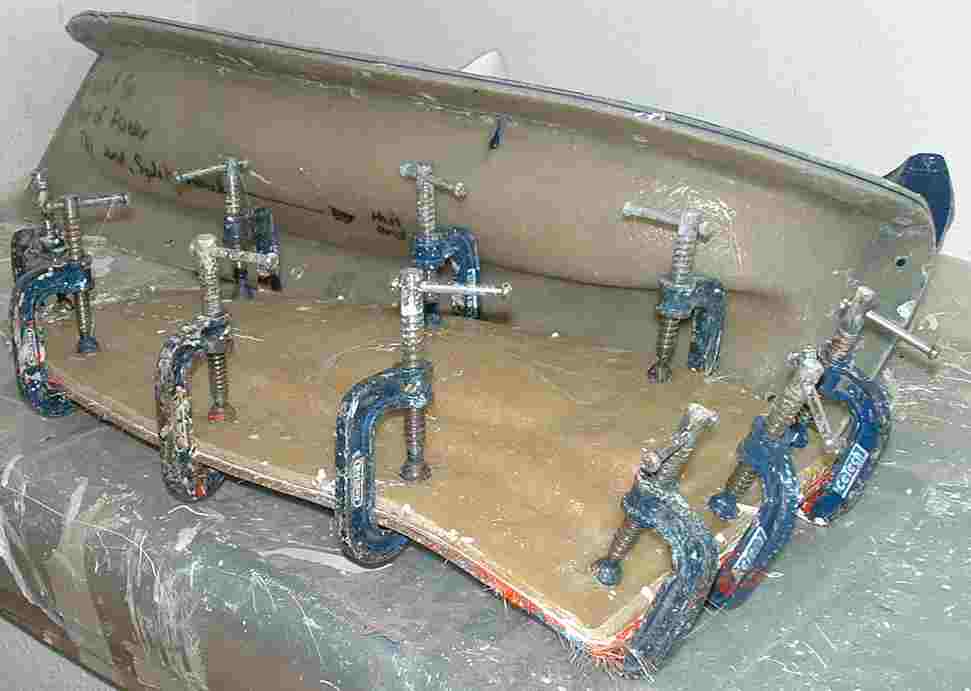|
RESIN
|
||||||||||
|
HOME | INDEX | AUTOMOTIVE | BLUEBIRD | ELECTRIC CARS | E. CYCLES | SOLAR CARS |
||||||||||
|
Resin is a hydrocarbon secretion of many plants, particularly coniferous trees, valued for its chemical constituents and uses such as varnishes and adhesives. The term is also used for synthetic substances of similar properties.
Formation
Plants produce resins for various reasons whose relative importances are debated. It is known that resins seal the plant's wounds, kill insects and fungi, and also allow the plant to eliminate excess metabolites.
Formed in special resin canals, resin is typically exuded in soft drops from wounds, hardening into solid masses in the air. It may be obtained by making incisions in the bark or wood of the secreting plant, or extracted from resin-bearing plants by leaching of the tissues with alcohol. The hardening property has made resins traditionally useful as varnishes and adhesive.
Chemistry
Resin as produced by most plants is a viscous liquid, typically composed mainly of volatile fluid terpenes, with lesser components of dissolved non-volatile solids which make resin viscous and sticky. The most common terpenes in resin are the bicyclic terpenes alpha-pinene, beta-pinene, delta-3 carene and sabinene, the monocyclic terpenes limonene and terpinolene, and smaller amounts of the tricyclic sesquiterpenes longifolene, caryophyllene and delta-cadinene. The individual components of resin can be separated by fractional distillation. Some resins contain high proportion of resin acids.
A few plants produce resins with different compositions, most notably Jeffrey Pine and Gray Pine, the volatile components of which are largely pure n-heptane with little or no terpenes. The exceptional purity of the n-heptane distilled from Jeffrey Pine resin, unmixed with other isomers of heptane, led to its being used as the defining zero point on the octane rating scale of petrol quality. As heptane is explosively flammable, distillation of resins containing it is very dangerous. Some resin distilleries in California exploded because they mistook Jeffrey Pine for the similar but terpene-producing Ponderosa Pine. At the time the two pines were considered to be the same species of pine; they were later classified as separate species in the mid to late 19th century.
Some resins when soft are known as oleo-resins, and when containing benzoic acid or cinnamic acid they are called balsams. Other resinous products are in their natural condition mixed with gum or mucilaginous substances and known as gum resins. Many compound resins have distinct and characteristic odours, from their admixture with essential oils.
The hard transparent resins, such as the copals, dammars, mastic and sandarac, are principally used for varnishes and cement, while the softer odoriferous oleo-resins (frankincense, elemi, turpentine, copaiba) and gum resins containing essential oils (ammoniacum, asafoetida, gamboge, myrrh, and scammony) are more largely used for therapeutic purposes and incense.
Certain resins are obtained in a fossilized condition, amber being the most notable instance of this class; African copal and the kauri gum of New Zealand are also procured in a semi-fossil condition.
Derivatives
Solidified resin from which the volatile terpene components have been removed by distillation is known as rosin. Typical rosin is a transparent or translucent mass, with a vitreous fracture and a faintly yellow or brown colour, non-odorous or having only a slight turpentine odour and taste. It is insoluble in water, mostly soluble in alcohol, essential oils, ether and hot fatty oils, softens and melts under the influence of heat, is not capable of sublimation, and burns with a bright but smoky flame. This comprises a complex mixture of different substances including organic acids named the resin acids. These are closely related to the terpenes, and derive from them through partial oxidation. Resin acids can be dissolved in alkalis to form resin soaps, from which the purified resin acids are regenerated by treatment with acids. Examples of resin acids are abietic acid (sylvic acid), C20H30O2, plicatic acid contained in cedar, and pimaric acid, C20H35O2, a constituent of gallipot resin. Abietic acid can also be extracted from rosin by means of hot alcohol; it crystallizes in leaflets, and on oxidation yields trimellitic acid, isophthalic acid and terebic acid. Pimaric acid closely resembles abietic acid into which it passes when distilled in a vacuum; it has been supposed to consist of three isomers.
Synthetic resins
Synthetic resins are materials with similar properties to natural resins - viscous liquids capable of hardening. They are typically manufactured by esterification or soaping of organic compounds. The classic variety is epoxy resin, manufactured through polymerization-polyaddition or polycondensation reactions, used as a thermoset polymer for adhesives and composites. One more category, which constitutes the 75% of resins used, is Unsaturated Polyester Resin. Ion exchange resin is another important class with application in water purification and catalysis of organic reactions.
Epoxies, polyesters and vinylesters represent just two resin families. Epoxies belong to a family of resins which are epoxy functional, which means they can be cured with amine curing agents at room temperatures to form excellent adhesives and composite resins. Polyesters and vinylesters belong to another family of resins containing an unsaturated polyester or hybridized vinylester backbone which is catalyzed with a peroxide (normally Conap and MEKP) to condense into a cross-linked solid resin.
Resins (liquid plastics, i.e. epoxies, polyesters and vinylesters) are commonly used in many applications when wetting out fiber reinforcing in order to saturate the fibers and form an FRP (fiber reinforced plastic) part. Whether the part utilizes fiberglass fibers, carbon fiber, Kevlar aramid, or wood fibers adhesions to and wetting of the fibers is a critical step in the production of a quality part.
COMPOSITE DIRECTORY
LINKS:
A taste for adventure capitalists
Solar Cola - a healthier alternative
|
||||||||||
|
AUTOMOTIVE | EDUCATION | SOLAR CAR RACING TEAMS | SOLAR CAR RACING TEAMS | SOLAR CARS |
||||||||||
|
The
content of this website is copyright © and design copyright 1991 and
2006 Electrick Publications and NJK. All rights reserved. The bluebird
logo |
||||||||||


